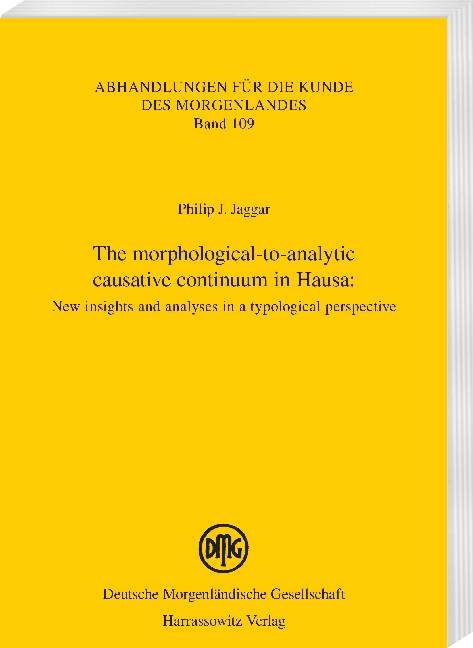
- Afhalen na 1 uur in een winkel met voorraad
- Gratis thuislevering in België vanaf € 30
- Ruim aanbod met 7 miljoen producten
- Afhalen na 1 uur in een winkel met voorraad
- Gratis thuislevering in België vanaf € 30
- Ruim aanbod met 7 miljoen producten
Zoeken
The Morphological-To-Analytic Causative Continuum in Hausa
New Insights and Analyses in a Typological Perspective
Philip J Jaggar
€ 88,95
+ 177 punten
Omschrijving
Over the last few decades, linguists have devoted considerable attention to both homogeneity and variation in the expression of causal events across languages. However, most studies, whether typological or language-specific, have focused on the category of morphologically overt (e.g., 'lie/lay X down') causatives, rather neglecting complex periphrastic (e.g., 'get X to lie down') formations. The present study addresses this imbalance by elucidating a wide spectrum of causative expressions in Hausa (Chadic/Afroasiatic), supported by a strong cross-linguistic perspective. It systematically explores, for the first time in an African language, the key design features that distinguish the two mechanisms. Also, it demonstrates that Hausa periphrastic causatives can also differ from each other, e.g., in implicational strength, depending on the modal (TAM) properties of the lower clause. In line with contemporary approaches located within a general typology of causation, the analysis invokes the widely accepted dichotomy between direct and indirect causative constructions. Direct causation associates with morphological causatives, indirect causation with periphrastic expressions - compare morphological 'I lay X down' (direct, with no intermediary) with periphrastic 'I got X to lie down' (indirect, where X also functions as an intervening actor/cause). Thus, this study provides a rare account of how the two types are used to describe pragmatically different causal events and participant roles.
Specificaties
Betrokkenen
- Auteur(s):
- Uitgeverij:
Inhoud
- Aantal bladzijden:
- 87
- Taal:
- Engels
- Reeks:
- Reeksnummer:
- nr. 109
Eigenschappen
- Productcode (EAN):
- 9783447108034
- Verschijningsdatum:
- 14/06/2017
- Uitvoering:
- Paperback
- Formaat:
- Trade paperback (VS)
- Afmetingen:
- 145 mm x 220 mm
- Gewicht:
- 139 g

Alleen bij Standaard Boekhandel
+ 177 punten op je klantenkaart van Standaard Boekhandel
Beoordelingen
We publiceren alleen reviews die voldoen aan de voorwaarden voor reviews. Bekijk onze voorwaarden voor reviews.








